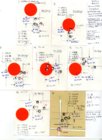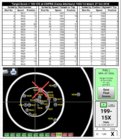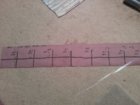I have also wondered many times the degree of correlation of bullet speed consistency from shot to shot, to how they group on the target. Yes, theoretically, if all other factors were equal, two bullets with the same speed should have the same or very close point of impact (POI) on the target. The keywords being “very close”, which have to be defined, and I won’t get into that so I won’t risk never getting to my point here.
I have been shooting F-Class for almost six years, so I consider myself and advanced novice. I recognize that that compared to most competitive shooters, I know very little, and that only encourages me to learn more. I do this (learning) by asking questions, observing, and collecting data.
I look closely at every target I shoot, and document everything I can so later on I can compare results. I have shot very few targets at 100 yards, a few more at 300, most at 600, and some at 1000.
I analyze my 100- and 300-yard target using the paper target themselves. For the 600-yard targets, which are the ones I shoot mostly, I have both the paper targets and the e-target screen capture displays. For the 1000-yard targets, I have only the e-target screen capture displays.
I shot this first target (seven bulls) over a week ago at 300 yards for testing various Varget loads on my 6mm-BRA. This barrel had only 23 rounds prior, and I wanted to get an idea of the speed, potential over pressure, etc. I shot these with the MagnetoSpeed chronograph attached to the barrel. I wrote down on the target the speed of each shot. I fired only three shots at bull No.2 as that was all I loaded with this charge, by mistake.
I did not have enough room to fit all seven loads on the same paper, so bull No.7 was on a different paper, adjacent to the other six bulls. Loads one through six were all at the same bullet seating depth, but different from number seven, which was the load I had been using on the previous barrel rather successfully. The old barrel, BTW, still shoots fine.
How close the speeds correlate to their POI, and the effect of their spread, I leave up to you to decide.
At 300 Yards

At 1000 Yards - One match results (20 rounds)

(The wind fooled me - I saw it coming but did not believe it. From an X for #10, a 10 for #11, and finally the lone 9 for #12.)
At 1000 yards. My results at the 2019 Indiana Regional at CIHPRS, Camp Atterbury.
Note that the Standard Deviations and Extreme Spreads had no correlation to their respective scores, as other factors (likely) had more effect.
 So why bother
So why bother with loading to within a kernel of powder, seating bullets to the nearest 0.001", etc.?
Simple: Those are the few things (factors) that we can control. There are many others that we cannot control, such as the wind, temperature, being able to clearly see the target, for which we can only hope to make good estimates.
Alex













